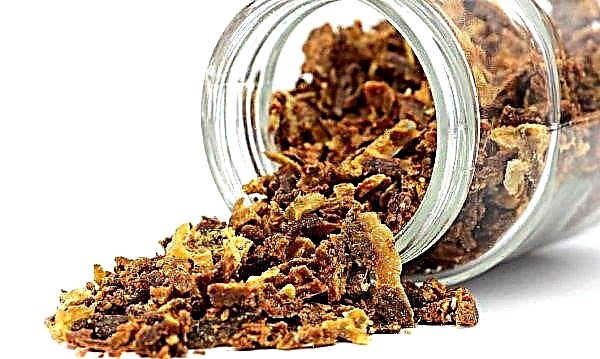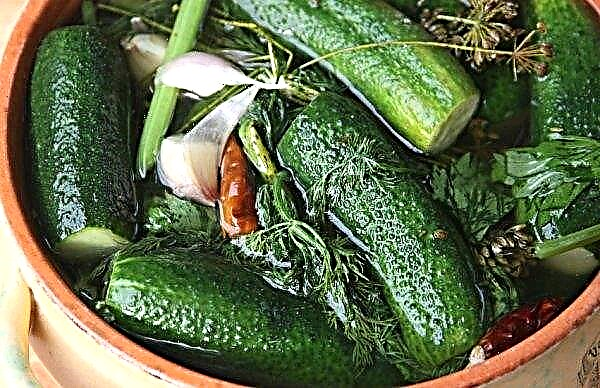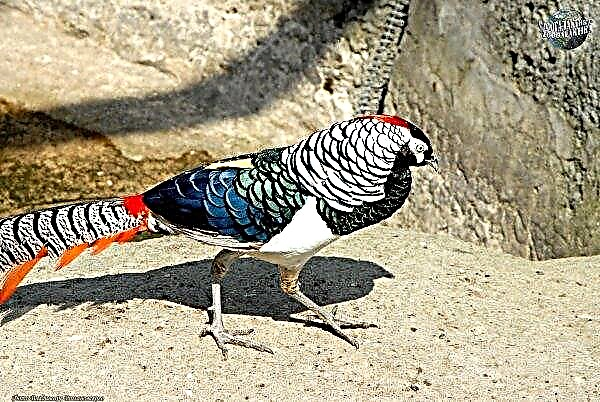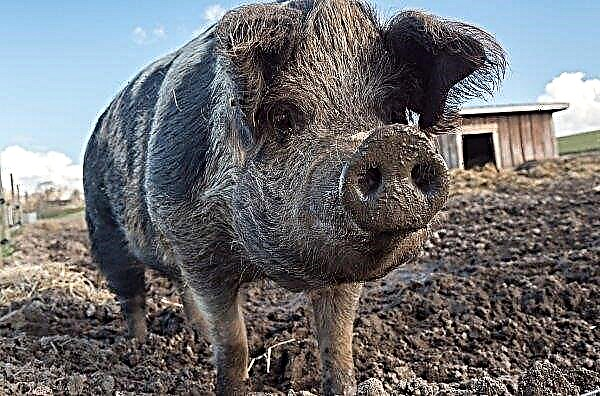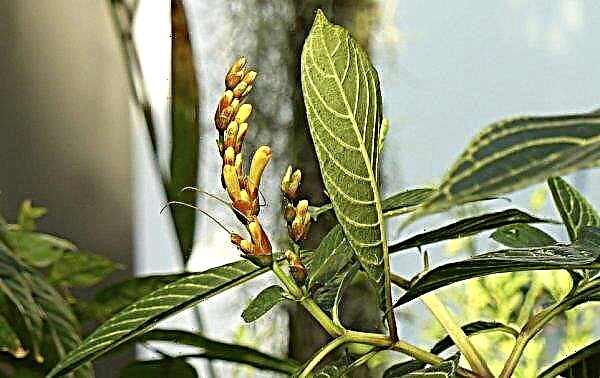Chlorophytum is a popular plant that can be found both in home rooms and in office. Despite the unpretentiousness in care, quite often its leaves at the ends begin to dry. Consider what can cause this problem, and how to deal with it.
Why do chlorophytum leaves dry and what should be done
Despite the fact that experts say that the main reason for the drying of leaves is improper care, there are others that will be discussed later.
Violation of the conditions of detention
Since this flower is a photophilous plant, one of the reasons for drying is the lack of light. To restore the state of foliage, the pot is placed in a well-lit place, while the temperature should be in the range + 21 ... + 23 ° С. In the cold season, it is recommended to conduct additional illumination.
Did you know? Chlorophytum is an air filter. One flower can neutralize up to 80% of harmful impurities in the room where it is located.
In addition to all this, a decrease in air humidity affects the state of leaf tips. To create its suitable level, the plant is sprayed with the help of a spray gun with warm, settled water. If such actions do not have the desired result, you can put a container of water next to the plant.
Wrong watering
Despite the love of moisture, chlorophytum negatively refers to stagnation of water. Overmoistening leads to decay of the roots, which will immediately affect the leaves: they begin to dry from the ends and acquire a rich yellow color. In this case, it is recommended to transplant the flower into a new pot and without fail to inspect the roots, while removing the damaged parts.
Oversupply or deficiency of fertilizers
Owners with great experience know that chlorophytum has a rather powerful root system, which develops soil in a short time, while depleting it. However, a shortage or oversaturation of fertilizers negatively affects the flower: the leaves begin to turn pale, and their tips dry.
In order not to omit this, it is important to follow the rules for fertilizing. In spring and summer, top dressing is carried out weekly, and in the fall - twice a month. In winter, fertilizers are not applied, since the flower is at rest.
Inappropriate soil composition
Chlorophytum needs loose soil. An excess of sodium or increased density leads to the fact that the leaves begin to dry and turn brown. After adding sand and peat, as well as changing the composition of fertilizers, the flower will soon return to its former form. The best option is to use the finished soil for growing the flower, which is designed specifically for it.
Tank dimensions
The lack of transplantation leads to the fact that the roots of the plant cease to fit in the pot. Their weathering and lack of nutrients lead to a slowdown, in addition, the old leaves dry, but the new ones do not grow. As a result of the loss of green mass, the plant dies. To prevent this, it is important to transplant the flower into a new, more spacious pot every year.
Pests
Despite the rather high resistance of chlorophytum to attacks by various pests and pathogenic bacteria, this still happens sometimes. The defeat of aphids and scale insects affects the dryness of the tips of the leaves on the flower. Gradually they deteriorate along the entire length and fall off. The presence of pests can be determined by the presence of white larvae on the plant.
They get rid of them by rubbing the plant with soap and water, and sprinkle the ground with black pepper. Aphid invasion is destroyed by treating chlorophytum with any fungicide.
Preventive measures
In order to prevent problems with leaves, you need to follow some preventive measures in the care of chlorophytum:
- comply with the rules of irrigation;
- inspect the flower for pests;
- fertilize as recommended;
- Do not expose the pot to the sun;
- transplant regularly.
Important! During the heating season, if the pot is near the battery, it is recommended to put a wet rag or towel on it. This will help increase the humidity in the room.
Useful care tips
In order to avoid mistakes when growing chlorophytum, you need to know the basic rules for caring for it:
- Do not place the plant where direct sunlight is present;
- in the summer you need to carry out frequent and plentiful watering, as well as spraying;
- systematically remove damaged or diseased leaves;
- fertilize exclusively during the growing season.
 As can be seen from the foregoing, the tips of the leaves of chlorophytum quite acutely respond to many factors. Knowing them and adhering to the rules of care, you can avoid many problems and extend the life and beauty of the flower.
As can be seen from the foregoing, the tips of the leaves of chlorophytum quite acutely respond to many factors. Knowing them and adhering to the rules of care, you can avoid many problems and extend the life and beauty of the flower.


